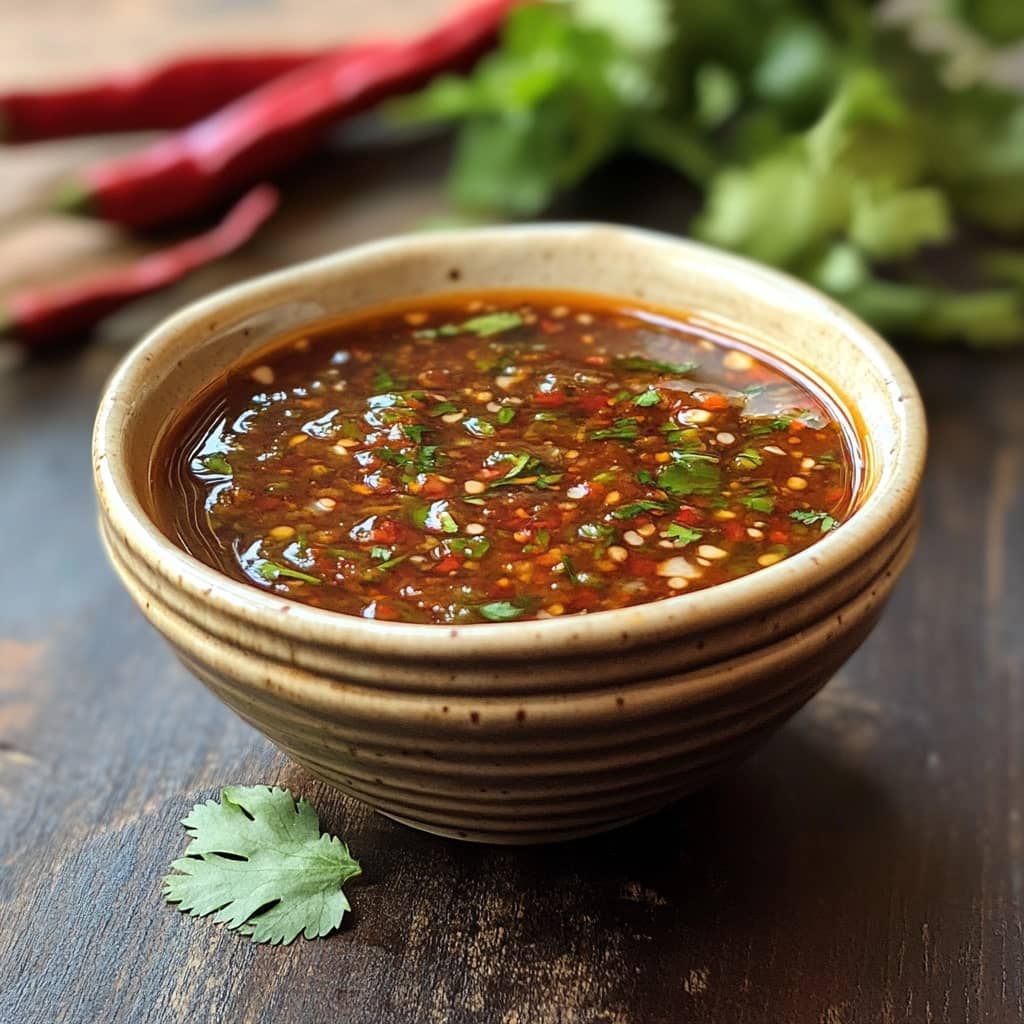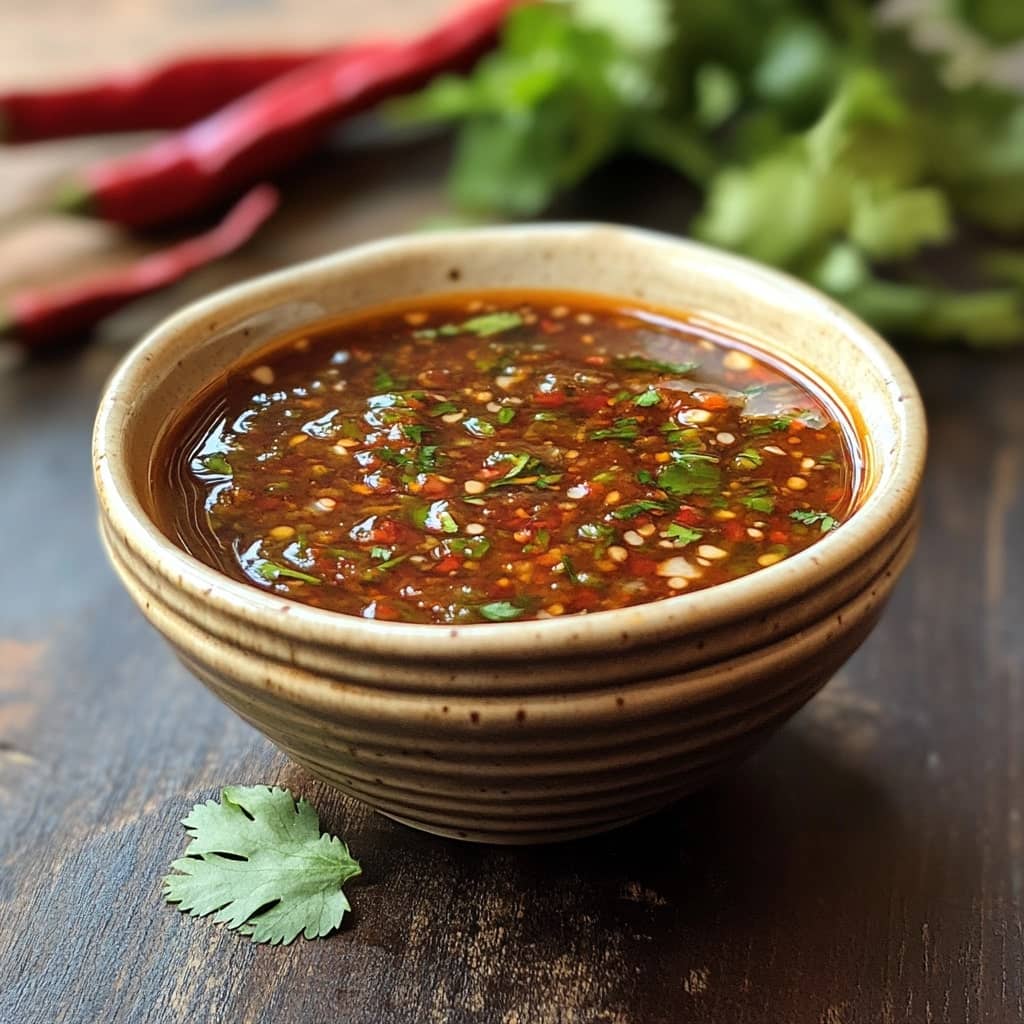Introduction
Dragon Sauce is a bold, flavorful condiment known for its spicy, savory, and slightly sweet profile that adds instant excitement to a variety of dishes. Often used in Asian-inspired recipes, this sauce typically features a combination of garlic, ginger, soy sauce, sesame oil, chili elements, and a touch of sweetness, creating a dynamic balance that enhances everything from stir-fries and noodles to grilled meats and roasted vegetables. Its fiery name reflects not only its spicy kick but also the powerful flavor it imparts to any dish. Loved by spice enthusiasts and home cooks alike, Dragon Sauce is revered for its versatility, whether it’s used as a marinade, dipping sauce, or glaze. It caters to a growing desire for bold, customizable flavors and plays an essential role in fusion cuisine. Easy to prepare and endlessly adaptable, Dragon Sauce brings depth and heat in just a spoonful, transforming ordinary meals into unforgettable flavor experiences.
The History of Dragon Sauce
While not rooted in any one specific traditional Asian cuisine, Dragon Sauce is a modern culinary creation inspired by the rich, spicy sauces of East and Southeast Asia. The term “Dragon” symbolizes power, fire, and mythical strength in Chinese culture, making it an apt metaphor for the intense and vibrant character of this sauce. Influences from Chinese, Thai, and Korean sauces can all be found in typical Dragon Sauce recipes, borrowing ingredients like soy sauce, gochujang, chili oil, and hoisin. The rise of fusion food trends in the late 20th and early 21st centuries helped popularize Dragon Sauce in Western kitchens, where chefs began crafting their own spicy, umami-packed sauces to complement a range of dishes. Today, Dragon Sauce has become a staple in global kitchens and restaurants, often appearing on menus with dishes labeled “Dragon Chicken,” “Dragon Noodles,” or “Dragon Shrimp,” signaling a spicy, bold flavor experience. Its evolution continues as home cooks and chefs experiment with regional chilies, sweeteners, and aromatics to put their own spin on this ever-popular sauce.
Ingredients Breakdown
Soy Sauce: The salty, umami-rich base of the sauce that ties all flavors together.
Garlic: Fresh minced garlic adds pungency and depth.
Ginger: Often used fresh or grated, it provides a spicy warmth and complexity.
Chili Element: Can include chili paste (like sambal oelek), chili flakes, hot sauce, or gochujang, depending on desired spice level and regional variation.
Sweetener: Brown sugar, honey, or maple syrup helps balance the heat and saltiness with a hint of sweetness.
Sesame Oil: Adds nuttiness and a rich, toasty aroma.
Rice Vinegar or Lime Juice: Provides acidity to balance the flavors and add brightness.
Cornstarch Slurry (optional): Thickens the sauce if a glaze-like consistency is desired.
Water or Broth: Used to adjust the consistency, making it more pourable or thick, depending on the dish it’s paired with.
Step-by-Step Recipe
- Prepare Aromatics: Mince 2–3 cloves of garlic and about 1 tablespoon of fresh ginger. Adjust quantity based on personal taste.
- Heat the Oil: In a small saucepan over medium heat, add 1 tablespoon of sesame oil. Once warm, add garlic and ginger and sauté for about 1–2 minutes until fragrant, being careful not to burn them.
- Add the Flavor Base: Stir in 1/4 cup soy sauce, 1–2 tablespoons of your preferred chili element (like chili paste or sriracha), and 1–2 tablespoons of sweetener (brown sugar or honey). Mix well to combine.
- Add Acid and Liquid: Add 1 tablespoon of rice vinegar or lime juice and 1/4 cup of water or broth. Stir to blend.
- Simmer and Thicken (Optional): Let the sauce simmer gently for 3–5 minutes to meld the flavors. If a thicker consistency is preferred, stir in a cornstarch slurry made from 1 teaspoon cornstarch mixed with 1 tablespoon cold water. Simmer for another minute until thickened.
- Taste and Adjust: Taste the sauce and adjust saltiness, sweetness, or heat as needed by adding more soy sauce, sweetener, or chili.
- Cool and Store: Allow the sauce to cool slightly before transferring it to a jar or container. Store in the refrigerator for up to one week.
Tips for the Perfect Dragon Sauce
Use fresh garlic and ginger for the most robust flavor. Toast the garlic and ginger gently—overheating can cause bitterness. Choose a chili element that suits your heat tolerance; mix mild and hot options for layered spice. Adjust the thickness depending on usage—thicker for glazes, thinner for dipping or marinating. Add a splash of citrus juice (lime or lemon) at the end for a fresh zing. If using the sauce on grilled meat, baste in the final minutes of cooking to prevent burning. Store in an airtight container and shake before each use to remix separated oils. Use low-sodium soy sauce if you’re watching salt intake. Add a pinch of five-spice powder or smoked paprika for an unexpected twist. For extra umami, a teaspoon of fish sauce or miso can deepen the flavor.
Variations and Customizations
Sweet and Spicy: Increase honey or brown sugar and reduce vinegar for a more mellow heat.
Extra Hot: Use bird’s eye chilies, chili oil, or add a splash of hot sauce like sriracha or sambal oelek.
Korean-Inspired: Replace chili paste with gochujang and soy sauce with tamari or Korean soy sauce.
Citrus Dragon: Add fresh orange or lime zest for a bright, zesty undertone.
Herbaceous: Mix in chopped cilantro, Thai basil, or green onions for a fresh herbal note.
Garlic Lover’s: Double the garlic and roast it for a more mellow, caramelized flavor.
Low-Sugar Version: Replace sugar with a sugar substitute or reduce the quantity while maintaining balance with extra vinegar or spice.
Creamy Dragon Sauce: Stir in a spoonful of mayonnaise, Greek yogurt, or tahini to create a creamy dipping sauce for fries or wraps.
Peanut Dragon: Add a tablespoon of peanut butter or tahini for a nutty version perfect for noodle bowls.
Vegan-Friendly: Use vegetable broth and ensure all components, like sweeteners, are plant-based.
Health Considerations and Nutritional Value
Dragon Sauce can be both flavorful and relatively healthy, depending on ingredients and usage. It is typically low in calories when used in small amounts, making it a flavorful alternative to heavy, creamy condiments. Soy sauce provides umami but is high in sodium, so using low-sodium versions or diluting with water or vinegar is recommended for those with hypertension or sodium sensitivity. Garlic and ginger offer health benefits such as anti-inflammatory and immune-boosting properties. Chili peppers contain capsaicin, known for boosting metabolism and reducing inflammation. Sweeteners add sugar, so moderation is key; using natural alternatives like honey or cutting the amount can help reduce sugar content. Sesame oil, while calorie-dense, is used sparingly and contains healthy fats that support heart health. The sauce is typically gluten-free if tamari or gluten-free soy sauce is used, and it can easily be made vegan. When homemade, Dragon Sauce avoids the preservatives and additives found in many store-bought versions, making it a cleaner, customizable condiment for health-conscious individuals.
FAQ
Can I store Dragon Sauce? Yes, it keeps well in the refrigerator for up to a week in an airtight container.
Is Dragon Sauce very spicy? It can be, but the heat level is adjustable depending on the type and amount of chili used.
What dishes go well with it? Stir-fries, grilled meats, tofu, noodles, rice bowls, roasted vegetables, and even sandwiches.
Is it gluten-free? Use tamari or certified gluten-free soy sauce to make it gluten-free.
Can I make it sugar-free? Yes, use natural sweeteners like stevia, erythritol, or simply reduce the amount of sugar or honey.
Can I freeze it? Freezing is not recommended due to separation, but refrigeration works well.
How do I thicken it? A cornstarch or arrowroot slurry added while simmering will thicken it.
Can I make a mild version? Yes, use a mild chili sauce or omit the heat entirely for a more kid-friendly version.

Dragon Sauce
Ingredients
Method
- Add the soy sauce, honey, rice vinegar, minced garlic, grated ginger, and sriracha sauce to a small saucepan. Stir thoroughly to ensure all ingredients are well blended.
- In a separate small bowl, whisk together the cornstarch and water until fully dissolved and smooth.
- Set the saucepan over medium heat and allow the mixture to come to a gentle simmer, stirring occasionally to avoid any sticking or burning.
- Gradually pour in the cornstarch slurry while stirring continuously. Keep stirring until the sauce thickens to a smooth and glossy consistency.
- Once the sauce has reached the desired thickness, remove it from the heat and let it cool slightly. It can be used immediately or stored in the refrigerator for later use.
